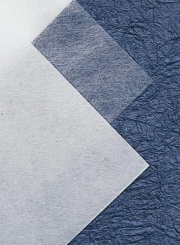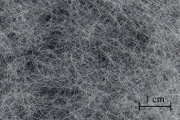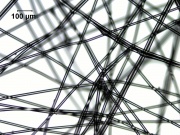Difference between revisions of "Reemay"
| (3 intermediate revisions by the same user not shown) | |||
| Line 11: | Line 11: | ||
== Applications == | == Applications == | ||
| − | * | + | * Lining, Interleaving, drying |
| + | * Strong support | ||
== Personal Risk == | == Personal Risk == | ||
| Line 30: | Line 31: | ||
[[media:download_file_84.pdf|Properties of Synthetic Fibers]] | [[media:download_file_84.pdf|Properties of Synthetic Fibers]] | ||
| − | == | + | == Resources and Citations == |
* Rachael Perkins Arenstein, Lisa Goldberg, and Eugenie Milroy, ‘Support and Rehousing for Collection Storage’ In ‘Preventive Conservation: Collection Storage’ Lisa Elkin and Christopher A. Norris (eds.), Society for the Preservation of Natural History Collections, New York. 2019. | * Rachael Perkins Arenstein, Lisa Goldberg, and Eugenie Milroy, ‘Support and Rehousing for Collection Storage’ In ‘Preventive Conservation: Collection Storage’ Lisa Elkin and Christopher A. Norris (eds.), Society for the Preservation of Natural History Collections, New York. 2019. | ||
| + | |||
| + | * [https://www.nps.gov/museum/publications/conserveogram/18-02.pdf?pdf=18-2 Safe Plastics and Fabrics for Exhibit and Storage], Conserve O Gram 18/2, National Park Service, September 2010. | ||
* Conservation Support Systems, Conservation Support Systems, Catalog, 1997 | * Conservation Support Systems, Conservation Support Systems, Catalog, 1997 | ||
Latest revision as of 16:21, 6 December 2020
Description
[Nonwoven Technologies] A registered trademark for a polyester spunbonded fabric. Reemay® is made from long continuous trilobal fibers of 100% Dacron. The trilobal fibers provide great strength, stability and uniformity than circular fibers. Rather than using heat, Reemay is air-bonded, which means there are no points to restrict airflow or impart a pattern. Reemay® fabrics are thermally and ultrasonically sealable; they contains no solvents or chemical binders. The fabric is resistant to chemicals, abrasion, and moisture. It is easy to cut and it does not ravel, fray, or produce dust. Reemay® is used for lining, interleaving, backing, and as a support when washing fragile materials.
Synonyms and Related Terms
remay (Esp.)
Applications
- Lining, Interleaving, drying
- Strong support
Personal Risk
Reemay [SDS sheet]
Other Properties
Resistant to solvents, oils, salt solutions, acids, alkalis.
Moisture regain = 0.5%.
Additional Information
Nonwoven Technologies: Product list
Comparisons
Properties of Synthetic Fibers
Resources and Citations
- Rachael Perkins Arenstein, Lisa Goldberg, and Eugenie Milroy, ‘Support and Rehousing for Collection Storage’ In ‘Preventive Conservation: Collection Storage’ Lisa Elkin and Christopher A. Norris (eds.), Society for the Preservation of Natural History Collections, New York. 2019.
- Safe Plastics and Fabrics for Exhibit and Storage, Conserve O Gram 18/2, National Park Service, September 2010.
- Conservation Support Systems, Conservation Support Systems, Catalog, 1997
- Fairchild's Dictionary of Textiles, Phyllis G.Tortora, Robert S. Merkel (eds.), Fairchild Publications, New York City, 7th edition, 1996
- Website address 1, Comment: AMOL reCollections Glossary: http://amol.org.au/recollections/7/c/htm


